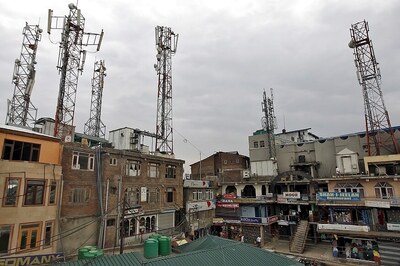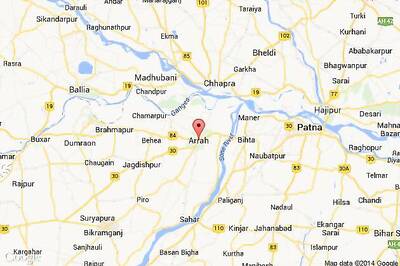
views
A natural concern of scientists, technologists and academics in the country arises from the startling silence of the interim budget on matters pertaining to Science and Technology (S&T). Apart from mentioning a new initiative of establishing a corpus of Rs 1 lakh crore through a 50-year interest-free loan to encourage research and innovation, a scheme for which no details have yet been made available, there is little mention of how much total financial input is needed, from which sources, and on what time scale, for India to achieve an all-round international level excellence in matters related to science.
Prowess in S&T is a sine qua non if a country wants a seat at the international high table. S&T is the bedrock of sustainable economic growth as well as for strategic advantage. India is being recognised and acknowledged as a rising power and a leader of the Global South. It is important that we develop our own research and related technologies, as only then can we remain immune to hostile and adversarial actions from our rivals and competitors who may have access to future-defining scientific knowledge and means of controlling its flow.
Despite approving a bill to set up a National Research Foundation (NRF) to overhaul and boost scientific advancement in the country several months ago, the government has so far been quiet on allocation for the institution or progress made, at least in the interim budget for 2024-25. The NRF was to be set up with a Rs 50,000 crore investment over five years, actually a 50 per cent reduction from what was recommended in the National Education Policy (NEP) 2020.
So far, we know very little about the NRF in terms of its structure. Apparently, it is to be housed in the Department of Science and Technology (DST). This is not a wise decision in my opinion. Another institution called the Science & Engineering Research Board (SERB), with strangely similar functions to the NRF, was set up in 2008. It is a completely internal organ of DST, despite original claims to the contrary that SERB would be like the US National Science Foundation (NSF), which is a fully autonomous body managed by professional science administrators. In SERB, on the other hand, the director reports to the Secretary of DST, and it is run by working scientists and DST officials. Its annual budget of just around Rs 900 crore is totally inadequate if it is to support all manner of basic and applied research in academic institutions within the country. The NRF Act calls for the winding up of SERB with the repeal of SERB’s establishing Act. Apparently, an institution is being shut down and another one with mostly similar aims is being set up in the same government department. As of now, SERB has not been wound up and NRF has not really been launched.
Coming to NRF, it is supposed to centralise scientific research funding in the country. It would also replace the research funding functions of governmental ministries and departments such as the DST, Department of Atomic Energy (DAE), Department of Biotechnology (DBT), Indian Council of Agriculture Research (ICAR), Indian Council of Medical Research (ICMR) and the University Grants Commission (UGC). While an outlay of Rs 50,000 crore (over five years) was announced in the 2020-21 budget, only Rs 14,000 crore would come from the public kitty. The rest, Rs 36,000 crore, is to come from unspecified sources in the private sector. The government outlay (Rs 14,000 crore over five years) is less than the current amount spent by the above-mentioned government departments in research related to S&T activities. In actual fact, NRF was allocated just Rs 1 lakh in the 2021-22 budget. In 2023-24, the Union budget allocated Rs 2,000 crore for the NRF, which was then reduced to Rs 258.60 crore. While the NRF Bill was approved in June 2023, the finance minister avoided a mention of NRF in her budget speech this year.
Some further elaboration of the proposed finances of NRF is needed. Rs 14,000 crore over five years, to be spent by the government, is equivalent to Rs 2,800 crore per year. Anyone with any idea of the volume of research conducted in India knows that this amount is completely insufficient even to maintain a primitive level of support. It is much less than the Rs 7,931.05 crore allocated presently to the DST, Rs 2,683.86 crore for the DBT, and Rs 5,746.51 crore for the Department of Scientific and Industrial Research (DSIR) during the Union budget for 2022-23. Even if one takes half of this as going towards salaries and pensions, what remains is much more than Rs 2,800 crore. What is the government up to?
There is a total lack of transparency in informing the public as to how the governance structure of NRF is to be established. The NEP 2020 had mentioned that the NRF would run independently of the government, by a rotating board of governors consisting of the “very best researchers and innovators across fields”. However, in June 2023, the government stated that the governing board would be presided over by the prime minister and the Union Minister of Science and Technology, a structure somewhat like the now-beleaguered Council of Scientific and Industrial Research (CSIR). The executive committee, which will manage the day-to-day functioning of the NRF, is to be headed by a government-appointed person (the Principal Scientific Advisor). The PSA is completely beholden to the government that has appointed him and to whom he is accountable on a day-to-day basis. To put it bluntly, NRF is not envisaged to function independently of the government.
It is not possible to look at S&T budgets without considering the Rs 1.206 lakh crore allocation for the Education Ministry. Of the total allocation, Rs 73,008 crore has been set aside for the Department of School Education and Literacy (DoSEL) and Rs 47,619 crore for the Higher Education Department. Much of this goes to meeting the salary and pension budgets of employees in educational institutions and their infrastructural overheads. Generously, one might estimate that 5 per cent of this amount of Rs 47,619 crore is actually spent on high-end research, namely Rs 2,381 crore, a ridiculously low amount in itself if one remembers that this includes aid to all Central and state government educational institutions. In other words, we are being asked to believe that an amount of Rs 5,181 crore for all public sector funding for higher-end S&T research will propel us to new scientific heights. This does not sound reasonable.
This was an interim budget and no figures are available for individual allocations to the scientific departments for 2024-25. More clarity may emerge when the regular budget is presented this July. What is clear, however, is that the present government has been steadily cutting the budget allocations to the scientific departments for close to a decade (inflation-corrected), barring perhaps some casual increases here and there to DAE and the Indian Space Research Organisation (ISRO).
What would cause an otherwise progressive and ambitious government to undertake these counterintuitive financial cuts for S&T? Any speculation might be risky but a hint may be gleaned from the fact that the government has indeed proposed interest-free loans of around Rs 1 lakh crore to the private sector in this budget. This is a commendable initiative to foster entrepreneurship, research, and innovation. Possibly, the final budget for 2024 will entail novel initiatives like the integration of CSIR laboratories with private industry. How the amount of Rs 1 lakh crore might dovetail with the Rs 36,000 crore that the private sector would contribute to the NRF is not yet known.
The government probably would like to encourage private academic institutions to make an increasing investment in higher education and research, which will further help enhance the quality of education, reduce capital investments, and contribute to the overall expansion of Higher Education Institutions (HEI). These institutions do not need to follow reservations and such a move could also open the way for foreign universities to set up shop in India.
This might well be the reason for the government to be drastically and continually reducing its investment in public sector educational and research institutions. Possibly the Central government wants to gently sideline the public sector educational institutions, namely IITs, IISERs, and Central Universities, without actually saying so. These places are by now nearly moribund, on an absolute international standard, and have been captured by a retrograde ecosystem that we have inherited from former days. The present research establishment is a creation of a small inbred group of chaudhuris, gatekeepers who have ensured that their accumulated booty in terms of influence and patronage is jealously guarded by members of their carefully crafted ecosystem.
The teaching institutions are by now practically overrun by consequences of caste reservations, which no longer serve the cause for which they were originally intended. Reservation now has very little to do with redressing social inequalities and so-called self-respect, and more to do with too many youngsters running behind too few jobs and opportunities. It is more about the concerns of young people in a scarcity economy and less about social engineering. Everyone wants to belong to a backward caste, in other words, follow the slogan jitni abadi utna haq. In all this, the question of competing with the US and China on an absolute scale in the conventional system of refereed papers in high-level international journals, is more or less illusional.
If the government indeed places the major responsibility of higher S&T on the private sector, in both its education and research components, it will have finessed away the many intractable problems that face higher scientific research today and its funding by the public sector.
What cannot be set right needs to be bypassed.
Gautam R. Desiraju is an Emeritus Professor in the Indian Institute of Science, Bengaluru and is the author of “Bharat: India 2.0” published in 2021. He has an H-index of 104. Views expressed in the above piece are personal and solely those of the writer. They do not necessarily reflect News18’s views.
















Comments
0 comment